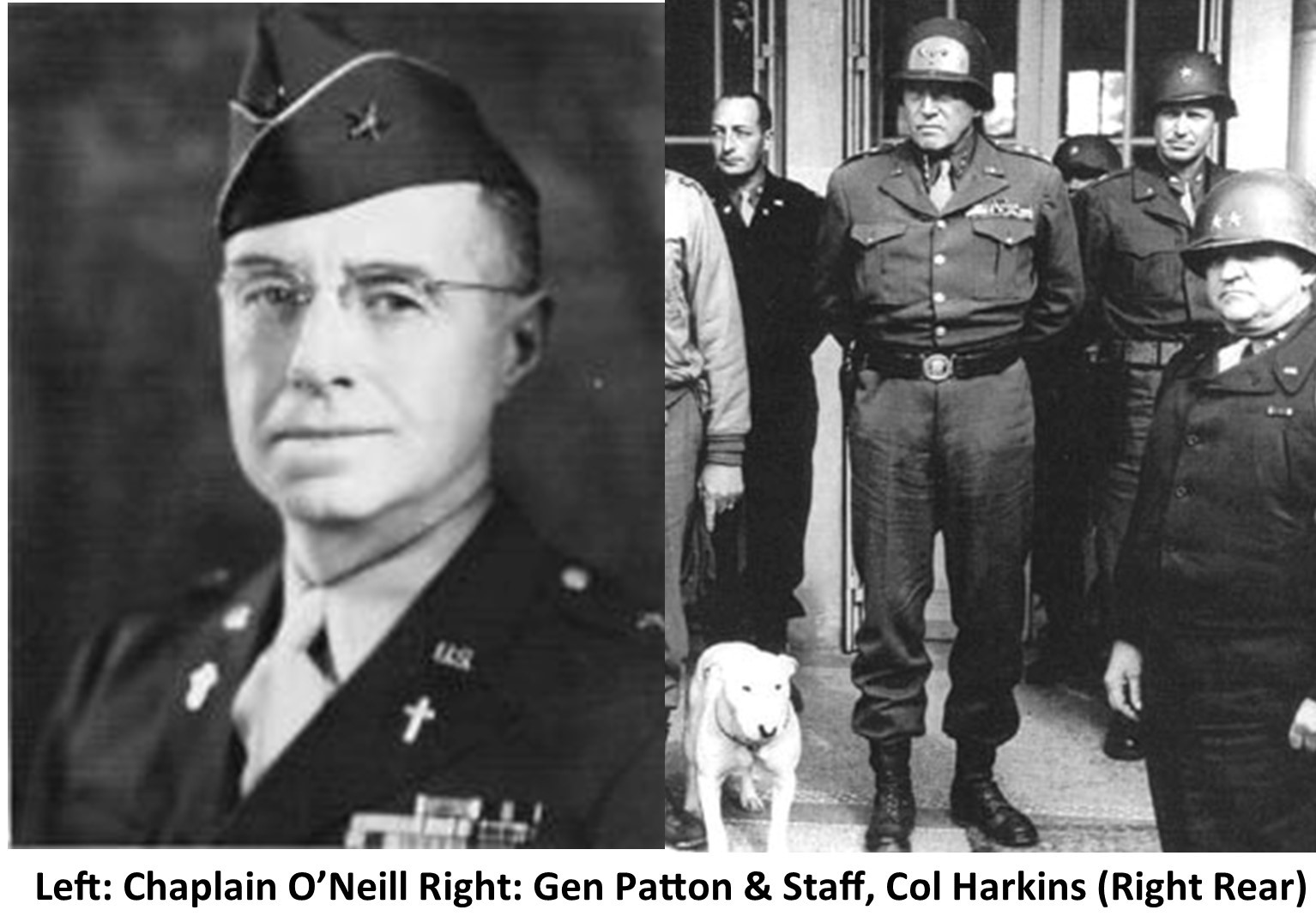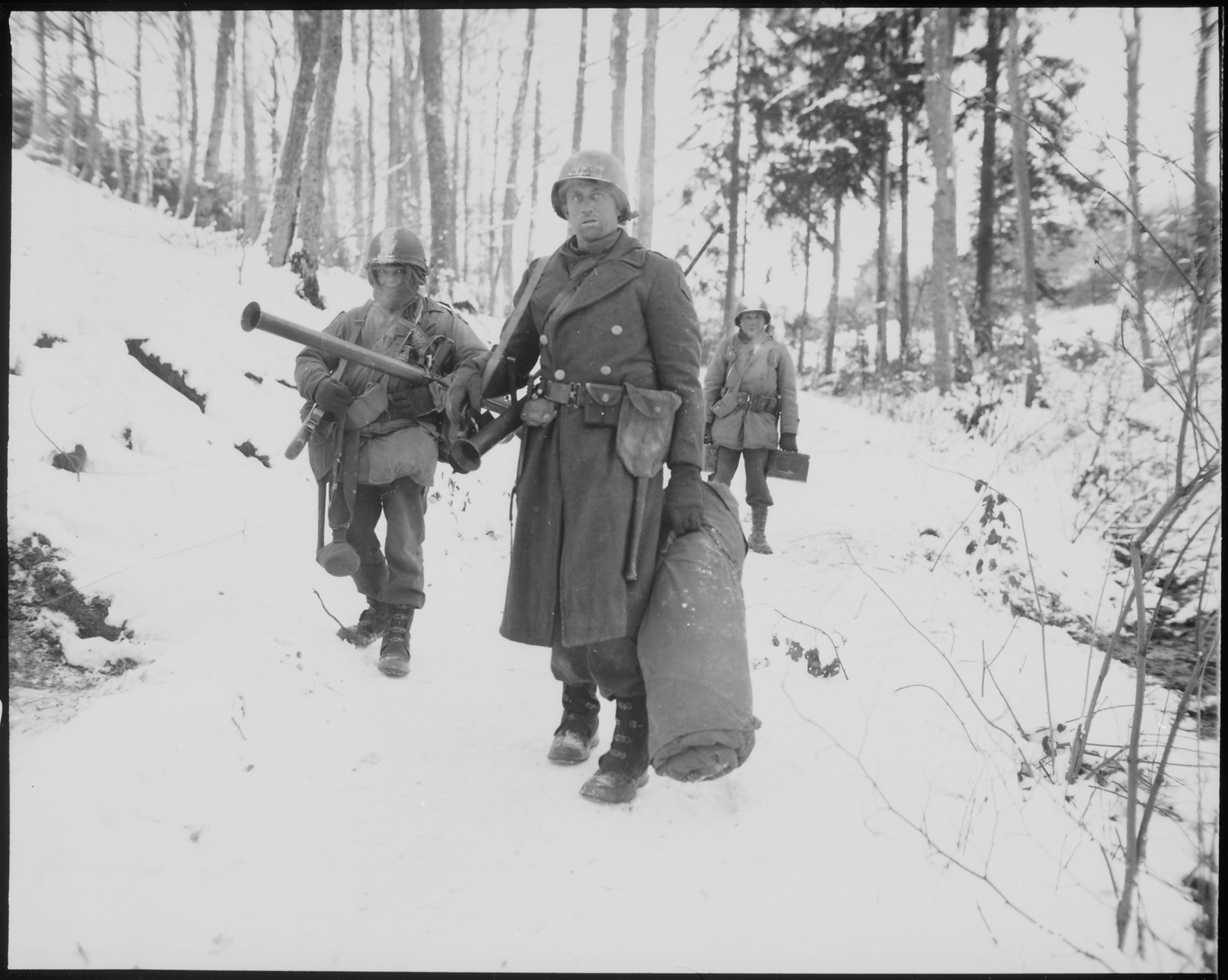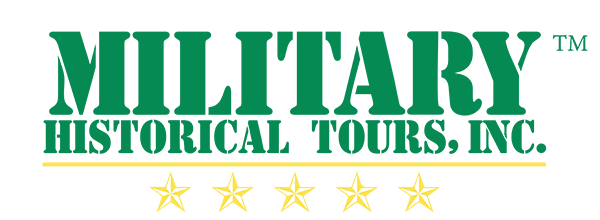Blog 12/23/2020 - Battle of the Bulge – Bastogne, Belgium
MHT Blog December 23, 2020 - Battle of the Bulge – Bastogne, Belgium
“General Patton’s Famous Weather Prayer”
There are two versions of how the prayer for better weather came to be. The first was from Colonel Paul Harkins, Patton’s Deputy Chief of Staff , who wrote as a footnote in "War As I Knew It", a book based on Patton’s diaries and published after Patton's death in 1947. Harkins story is the wording seen in the classic war movie "Patton" that on or about December 14, 1944, General Patton called Catholic Chaplain James O’Neill, Third Army Chaplain, and himself into his office at Third Army Headquarters at Nancy, France. Murky skies restricting air support along with heavy precipitation and its ensuing mud had frustrated Patton’s advance and he felt the weather was acting as a military disadvantage to ultimate victory. So, the general asked O’Neill to come up with “a prayer for good weather.” The movie shows the meeting: https://www.youtube.com/watch?v=PehCORojjtw

Chaplain O'Neill’s version disagrees with the date and events stating that Patton called him on the phone on 8 December asking for a prayer, and he accepted the challenge at once. When O’Neill couldn’t find an existing prayer that fit the circumstances, he penned a new one: "Almighty and most merciful Father, we humbly beseech Thee, of Thy great goodness, to restrain these immoderate rains with which we have had to contend. Grant us fair weather for Battle. Graciously hearken to us as soldiers who call upon Thee that, armed with Thy power, we may advance from victory to victory, and crush the oppression and wickedness of our enemies and establish Thy justice among men and nations." Patton immediately ordered this printed on around 250,000 cards for every man in Third Army. O'Neill said the card should pass along a Christmas Greeting to the troops and Patton signed a greeting on the opposite side of the card: “To each officer and soldier in the Third United States Army, I wish a Merry Christmas. I have full confidence in your courage, devotion to duty, and skill in battle. We march in our might to complete victory. May God’s blessing rest upon each of you on this Christmas Day.”
A day later, O’Neill presented the General with Training Letter No. 5 a concise directive to all chaplains to implore every man in Third Army to pray for better weather and victory. Patton read it and directed that it be circulated without change to all of the Third Army’s 486 chaplains, as well as to every organization commander down to and including the regimental level. In total, 3,200 copies were distributed over O’Neill’s signature to every unit in the Third Army on 11/12 December as the letter was dated 14 December. O'Neill's story bears credibility as a quarter million postcards aren't printed overnight so he contacted the 3rd Army Engineer and the decision was made to have the 664th Engineer Topographic Battalion, with its multiple large format offset presses, execute the print mission. The 664th Engineer Topographical Company worked around the clock to reproduce 250,000 cards bearing the prayer for fair weather and Patton’s Christmas greeting. The cards were distributed by December 14. Two days later, the U.S. First Army to the north was engaged in one of the greatest battles ever fought by American forces against the Germans surprise launch of Operation Wacht am Rhein (Watch on the Rhine.) The outcome of that battle, and possibly of the entire Allied war effort in Europe, would turn on the weather that was denying the Allies their air superiority and supply routes. Patton’s Third Army would play a crucial part in the battle.

The movie "Patton" Hollywoodized the prayer making it look like George C. Scott as General Patton walked outside in a blizzard and read the prayer as his soldiers moved towards Bastogne. In fact, the prayer was for the end of the constant rain that had plagued his advance towards Germany since September. Patton did believe the prayer also worked for the snowy and foggy conditions as he marched his Army north to counter the German advance in the Battle of the Bulge.

O'Neill says it was late in January, 1945 when he saw Patton again. This was in the city of Luxembourg. He stood directly in front of me, smiled and said: "Well, Padre, our prayers worked. I knew they would." Then Patton cracked him on the side of his steel helmet with his riding crop. That was his way of saying. "Well done." (The movie does get the riding crop portion right as he is holding it as he reads the prayer aloud to God outside his HQ. With Patton killed in a freak traffic collision just over a year later and unable to settle the controversy, the story will live on in both versions.

